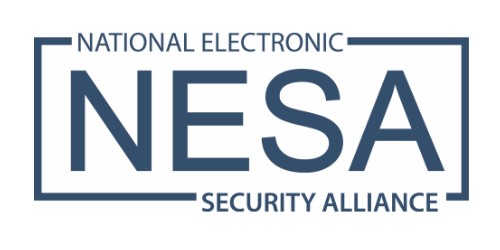
1.8.20 – SSI – Like every industry, security has seen its ups and downs. Experts give their takes on the good (demand, emerging tech) and the bad (increased competition, DIY).
As part of SSI‘s 2020 Security Industry Forecast, we spoke with more than two dozen experts to gain their insights into what 2020 holds for the security industry. A baker’s dozen of them also shared what they believe is better and worse about the industry. Here’s what they had to say…
Ric McCullough | PSA
GOOD: The industry is taking data privacy seriously. Even though it may be a few years before U.S. legislation passes and forces privacy changes for most American companies, personal privacy policies and procedures for the protection of data will be part of ongoing security plans, rather than an afterthought.
BAD: Large companies — manufacturers as well as integration companies — that are growing even bigger through acquisitions tend to be less
Fredrik Nilsson | Axis
GOOD: In the past year, technology development has made a huge leap forward in camera processing power, lowlight image capture and higher forensic quality video.
BAD: There’s growing public debate about electronic surveillance, particularly the use of facial recognition and AI software to profile individuals and invade personal privacy.
Clint Choate | SnapAV
GOOD: The industry is more smart home and business centric – breaking out of the myopic approach of burg and fire only panel business.
BAD: Tech giant entrances and DIY verticals causing security dealers/integrators to struggle with the pace of competitive pressures.
Is The Recurring Revenue Model Working For You?
We want to hear from you. Is RMR a part of your business plan? Have you had challenges? What technology areas have you found work best? Take our quick RMR survey and be entered to win a $100 Amazon gift card! Take our survey today.
Charles Durant | Sandra Jones and Co.
GOOD: Opportunities presented by emerging technologies such as AI in the form of machine learning, and those presented by the lack of leadership, customer service and product innovation demonstrated by the multinationals.
BAD: Increasingly emboldened patent trolls, and additional pressure on labor supply and talent shortages.
Daniel Gundlach | FLIR
GOOD: Providers are offering more advanced, comprehensive and high-performing solutions.
BAD: Technology innovation continues to evolve more quickly than the industry’s ability to learn, embrace and implement it quickly.
Joe Byron | MOBOTIX
GOOD: The proliferation of IoT-enabled devices paired with advanced analytics has proven how far we have come, moving away from traditional security systems to instead sell holistic solutions that provide value across multiple indicators.
BAD: In 2019, cybersecurity was a term that was in most companies’ marketing, but not always a lot of action behind it — which was displayed by breaches and headlines.
Richard Ginsburg | Alert 360
GOOD: Demand is still strong in residential and commercial; the economy is incredibly strong; and products are easier to install and more reliable.
BAD: Attrition is challenging; tariffs are adding 10% to sometimes 25% on some products; and we are in the late stages of a great economic expansion in which a slowdown could cause some industry turbulence.
Judy Jones-Shand | Napco
GOOD: Greater awareness in the residential market with mass advertising campaigns; greater demand and interest in electronic security and related IoT services, and more robust integrated ecosystems available to support them; and greater consumer adoption of security-oriented goods and services.
BAD: More competition including large market entrants, with large marketing budgets and marketing know-how; more DIY offerings to compete with, including those from companies formerly selling only to the pro channel; and more downward pressure on monthly residential monitoring rates due to competition and online options.
Chris Mosley | ESX
GOOD: The demand for security systems is higher than ever; consumers are more familiar with what’s possible to make homes, office space, retail outlets, etc. smarter with integrations; and wireless technologies continue to improve efficiencies.
BAD: Subscription fatigue could be starting to rear its head among consumers; supply choices have been constricted because a couple large foreign manufacturers have been barred from use in government contracts; and a few business titans with no historical involvement in residential security have entered the market with DIY devices and undercut prices through economies of scale.
John Piroli | Guardian Protection
GOOD: Better technology available to sell to customers. Security systems are smarter and are more capable. Cameras with video analytics and home automation devices have improved.
BAD: DIY is becoming more prevalent. Also Amazon purchased Ring and Google bought Nest — two examples of big companies getting more and more involved in the security space.
Tracey Boucher Brown | ScanSource
GOOD: With analytics the amount of information an end user can access via the physical security solution continues to amaze. Also, the adoption of physical security solutions at the consumer level.
BAD: For very unfortunate reasons, the overall need for physical security solutions, especially in schools, continues to grow. Also, competition has grown.
Kirk MacDowell | MacGuard Security Advisors
GOOD: Attrition continues to decrease; and consumers want what we have to offer in regard to IoT married to security.
BAD: Boutique funding and lenders to the industry have pulled out. Companies like Brinks got over their skis and purchased bad accounts and paid too much. It will take until 2021-22 to calm bankers’ nerves.
Peter Giacalone | Giacalone Associates
GOOD: A better understanding of DIY; greater understanding and adoption by consumers of security and smart home; and significant increase in residential adoption of video as a first step toward additional security for the home.
BAD: Issues with some imported technology products and security; cyber-attacks and need for increased network security amid IoT device adoption; and more companies with financial issues causing lenders and investors to take pause.
